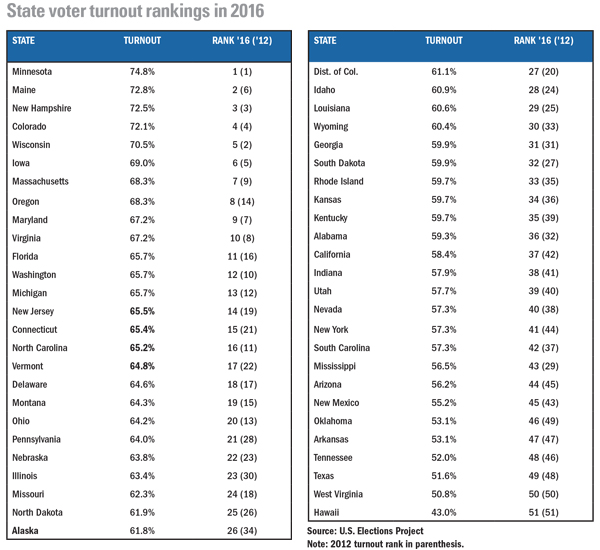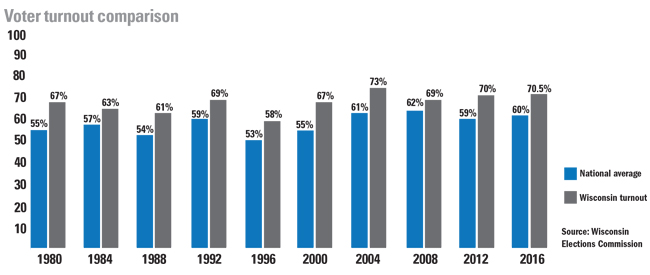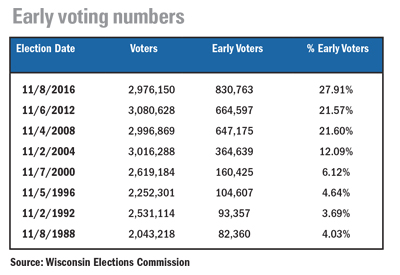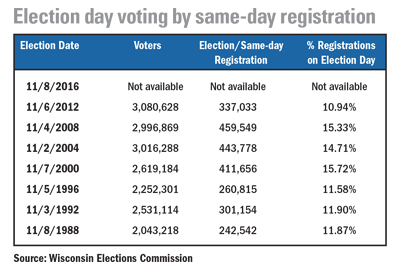Wisconsin voters take their civic responsibility of voting very seriously. In the 2016 presidential election, 70.5 percent of eligible voters in Wisconsin cast their ballot in the November elections, the fifth highest turnout in the country.
High voter turnout compared to most other states is not unusual or something new in the Badger State. Going back to the 1980 presidential election, you can see that voter turnout in Wisconsin for the presidential elections fell below 60 percent only one time: in 1996 during the Bob Dole vs. Bill Clinton election.


Why Wisconsin votes
There are several factors that help generate the high voter participation rate in Wisconsin: the growing popularity of early absentee and in-person voting; same day registration; and our status as a perennial battleground/swing state. Let’s examine the numbers.
Early absentee and in-person voting: Early voting, sometimes called “convenience voting,” has grown dramatically in Wisconsin. In 1988, only 82,350 voters took advantage of early voting. By 2016, 830,763 voters cast their ballots before Election Day on November 8. Going back to 1988, the numbers illustrate the growing popularity of early voting in Wisconsin.

Same-day registration: Same-day registration allows Wisconsin voters to register or update their voter registration when they vote on Election Day. Wisconsin was one of the first three states to adopt same-day registration in 1976, following Maine and Minnesota in 1974. While same-day registration has grown in popularity, its growth rate is smaller and uneven compared to early voting. But if has and continues to be a significant reason behind the higher-than-average voter turnout in Wisconsin.

Battleground/swing state status: In most presidential election cycles, Wisconsin is a highly competitive swing state. This places Wisconsin among a small number of closely contested battleground states that receive lots of money and attention from the candidates and the two major political parties. In 2016 and 2012, Wisconsin featured highly competitive presidential and U.S. Senate races, with election spending in the tens of millions. In a post-2016 election report by Nonprofit Vote, titled “America Goes to the Polls 2016,” the 14 identified battleground states, including Wisconsin, received 95 percent of campaign visits and 99 percent of campaign spending. According to the report, “only 35% of eligible voters lived in a battleground state in 2016. The remainder, 147 million voters, lived in the 36 states and the District of Columbia – sidelined and largely by-passed by the national campaigns.”
Prior to the 2016 presidential election, Democrats had carried Wisconsin presidential elections seven consecutive times. With President Trump’s narrow win last November, it’s a good bet that Wisconsin’s status as a swing state will continue to generate higher-than-average voter turnout.
Joe Murray is Director of Political and Governmental Affairs for the WRA.